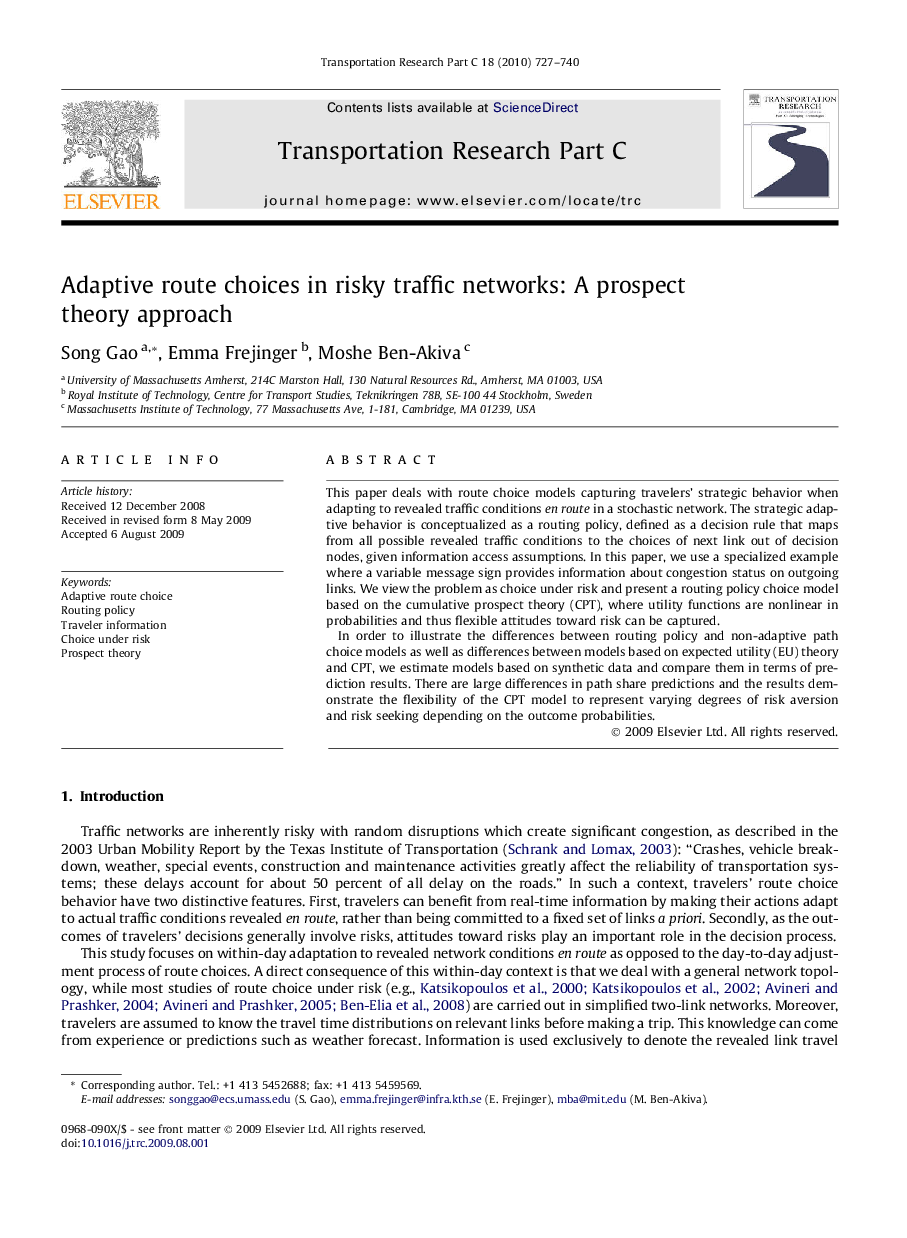| Article ID | Journal | Published Year | Pages | File Type |
|---|---|---|---|---|
| 525199 | Transportation Research Part C: Emerging Technologies | 2010 | 14 Pages |
This paper deals with route choice models capturing travelers’ strategic behavior when adapting to revealed traffic conditions en route in a stochastic network. The strategic adaptive behavior is conceptualized as a routing policy, defined as a decision rule that maps from all possible revealed traffic conditions to the choices of next link out of decision nodes, given information access assumptions. In this paper, we use a specialized example where a variable message sign provides information about congestion status on outgoing links. We view the problem as choice under risk and present a routing policy choice model based on the cumulative prospect theory (CPT), where utility functions are nonlinear in probabilities and thus flexible attitudes toward risk can be captured.In order to illustrate the differences between routing policy and non-adaptive path choice models as well as differences between models based on expected utility (EU) theory and CPT, we estimate models based on synthetic data and compare them in terms of prediction results. There are large differences in path share predictions and the results demonstrate the flexibility of the CPT model to represent varying degrees of risk aversion and risk seeking depending on the outcome probabilities.
